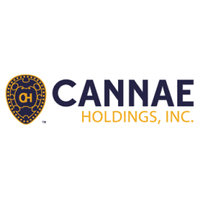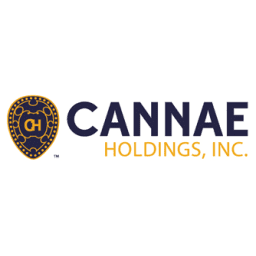
Cannae Holdings Inc
NYSE:CNNE


| US |

|
Johnson & Johnson
NYSE:JNJ
|
Pharmaceuticals
|
| US |

|
Berkshire Hathaway Inc
NYSE:BRK.A
|
Financial Services
|
| US |

|
Bank of America Corp
NYSE:BAC
|
Banking
|
| US |

|
Mastercard Inc
NYSE:MA
|
Technology
|
| US |

|
UnitedHealth Group Inc
NYSE:UNH
|
Health Care
|
| US |

|
Exxon Mobil Corp
NYSE:XOM
|
Energy
|
| US |

|
Pfizer Inc
NYSE:PFE
|
Pharmaceuticals
|
| US |

|
Palantir Technologies Inc
NYSE:PLTR
|
Technology
|
| US |

|
Nike Inc
NYSE:NKE
|
Textiles, Apparel & Luxury Goods
|
| US |

|
Visa Inc
NYSE:V
|
Technology
|
| CN |

|
Alibaba Group Holding Ltd
NYSE:BABA
|
Retail
|
| US |

|
3M Co
NYSE:MMM
|
Industrial Conglomerates
|
| US |

|
JPMorgan Chase & Co
NYSE:JPM
|
Banking
|
| US |

|
Coca-Cola Co
NYSE:KO
|
Beverages
|
| US |

|
Walmart Inc
NYSE:WMT
|
Retail
|
| US |

|
Verizon Communications Inc
NYSE:VZ
|
Telecommunication
|
Utilize notes to systematically review your investment decisions. By reflecting on past outcomes, you can discern effective strategies and identify those that underperformed. This continuous feedback loop enables you to adapt and refine your approach, optimizing for future success.
Each note serves as a learning point, offering insights into your decision-making processes. Over time, you'll accumulate a personalized database of knowledge, enhancing your ability to make informed decisions quickly and effectively.
With a comprehensive record of your investment history at your fingertips, you can compare current opportunities against past experiences. This not only bolsters your confidence but also ensures that each decision is grounded in a well-documented rationale.
Do you really want to delete this note?
This action cannot be undone.

| 52 Week Range |
17.08
22.52
|
| Price Target |
|
We'll email you a reminder when the closing price reaches USD.
Choose the stock you wish to monitor with a price alert.

|
Johnson & Johnson
NYSE:JNJ
|
US |

|
Berkshire Hathaway Inc
NYSE:BRK.A
|
US |

|
Bank of America Corp
NYSE:BAC
|
US |

|
Mastercard Inc
NYSE:MA
|
US |

|
UnitedHealth Group Inc
NYSE:UNH
|
US |

|
Exxon Mobil Corp
NYSE:XOM
|
US |

|
Pfizer Inc
NYSE:PFE
|
US |

|
Palantir Technologies Inc
NYSE:PLTR
|
US |

|
Nike Inc
NYSE:NKE
|
US |

|
Visa Inc
NYSE:V
|
US |

|
Alibaba Group Holding Ltd
NYSE:BABA
|
CN |

|
3M Co
NYSE:MMM
|
US |

|
JPMorgan Chase & Co
NYSE:JPM
|
US |

|
Coca-Cola Co
NYSE:KO
|
US |

|
Walmart Inc
NYSE:WMT
|
US |

|
Verizon Communications Inc
NYSE:VZ
|
US |
This alert will be permanently deleted.
 Cannae Holdings Inc
Cannae Holdings Inc
Cannae Holdings Inc
Investor Relations
Cannae Holdings Inc. is a strategic holding company with a penchant for investing in diverse industries, predominantly in technology, healthcare, and real estate, crafting a narrative that blends growth with sustainable profitability. Emerging from its roots as a spin-off of Fidelity National Financial in 2017, Cannae harnesses its expertise in identifying promising investment opportunities that provide significant upside potential. The company operates much like a carefully constructed portfolio, where each business sector is not merely an asset but a meticulously chosen partner contributing to the overarching synergy of Cannae’s corporate ecosystem. By focusing on sectors poised for transformation or experiencing substantial growth, Cannae leverages its strategic insights, active management, and deep sector expertise to guide its investments toward market leadership and robust financial returns.
Under the astute leadership of industry veterans, including Chairman William P. Foley II, Cannae Holdings has crafted a dynamic approach to monetizing its investments. The company generates revenue through a multi-pronged strategy that includes capital appreciation from equity stakes, dividends from portfolio companies, and strategic divestiture of mature assets. Cannae is known for its hands-on involvement in the management and strategic direction of its holdings, working actively to unlock value through operational enhancements and strategic partnerships. By weaving together a mix of high-growth startups and established cash-generative entities, Cannae creates a balanced revenue stream and positions itself to capture opportunities across economic cycles, ensuring a continuous story of growth bolstered by strategic acumen.

Cannae Holdings Inc. is a strategic holding company with a penchant for investing in diverse industries, predominantly in technology, healthcare, and real estate, crafting a narrative that blends growth with sustainable profitability. Emerging from its roots as a spin-off of Fidelity National Financial in 2017, Cannae harnesses its expertise in identifying promising investment opportunities that provide significant upside potential. The company operates much like a carefully constructed portfolio, where each business sector is not merely an asset but a meticulously chosen partner contributing to the overarching synergy of Cannae’s corporate ecosystem. By focusing on sectors poised for transformation or experiencing substantial growth, Cannae leverages its strategic insights, active management, and deep sector expertise to guide its investments toward market leadership and robust financial returns.
Under the astute leadership of industry veterans, including Chairman William P. Foley II, Cannae Holdings has crafted a dynamic approach to monetizing its investments. The company generates revenue through a multi-pronged strategy that includes capital appreciation from equity stakes, dividends from portfolio companies, and strategic divestiture of mature assets. Cannae is known for its hands-on involvement in the management and strategic direction of its holdings, working actively to unlock value through operational enhancements and strategic partnerships. By weaving together a mix of high-growth startups and established cash-generative entities, Cannae creates a balanced revenue stream and positions itself to capture opportunities across economic cycles, ensuring a continuous story of growth bolstered by strategic acumen.





























 You don't have any saved screeners yet
You don't have any saved screeners yet
